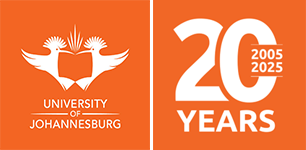Research
Home » Faculties of Science » Departments » Geology »Research projects are undertaken in collaboration with various institutions and universities worldwide. The projects currently being pursued by the academic staff include:
- Interaction between styles of mineralization and environmental change in the Precambrian:
- Geochronology, sedimentary provenance, sequence stratigraphy and palaeomagnetism of Mesoarchean to Palaeoproterozoic sedimentary successions on the Kaapvaal and Pilbara cratons
- Multidisciplinary study of the Precambrian biosphere and surficial oxygenation, Kaapvaal Craton, South Africa
- Investigation of iron deposits in South Africa, Brazil and India
- Investigation of base metal deposits in the Bushmanland region, the Areachap Group in the Northern Cape and the Zambian Copper Belt
- Provenance studies applied to understanding basin evolution and palaeogeographic reconstructions through time:
- Neoproterozoic relations between Southern Africa and South America
- Provenance studies applied to the understanding of basin evolution through time
- Geology, sedimentology, evaluation and utilization of southern African coal resources
- Documenting and publicising South Africa’s national geological, mineral and gemstone heritage
- Geodynamics of high-grade metamorphic terrains, with particular emphasis on the Neoarchean-Palaeoproterozoic Limpopo Complex
- Thermal regime, fluid activity and magmatism of regional and local-scale shear-zones in Precambrian granulite complexes
- Geology of certain nature reserves in the Limpopo Province
- Geology of greenstone belts and associated granites
- Geology of the Bushveld Complex and associated platinum group element mineralization
- Petrogenesis of massif-type anorthosite complexes, with particular emphasis on the Kunene Complex of Angola
- Mineralogical control on natural surface water quality in South Africa
- Medical Geology, with a special focus on naturally occurring geo-health issues
- Economic geometallurgy
- The origin and effect of fluids in the Earth’s crust in the Archaean and Palaeoproterozoic eons
- The formation and chronology of caves in the Cradle of Humankind, as well as elsewhere in South Africa
- Mineralogical and cosmochemical research on the comet fragment “Hypatia” from the Libyan Desert Glass area, SW Egypt
To support the research activities within the Department of Geology, two research centres were established and are still active today. The first, the Centre of Excellence for Integrated Mineral and Energy Resource Analysis (DSI-NRF CIMERA), was established in 2014, and its primary focus is on conducting high-quality economic geology research on mineral and fossil fuel resources. The second, the Palaeoproterozoic Mineralisation (PPM) Research Group, was established in the early 2000s with an original focus on researching the Palaeoproterozoic ore deposits of southern Africa, especially the iron and manganese ore deposits. However, the PPM Research Group has since then shifted its focus to supporting staff training, teaching and research falling outside the scope of DSI-NRF CIMERA.
